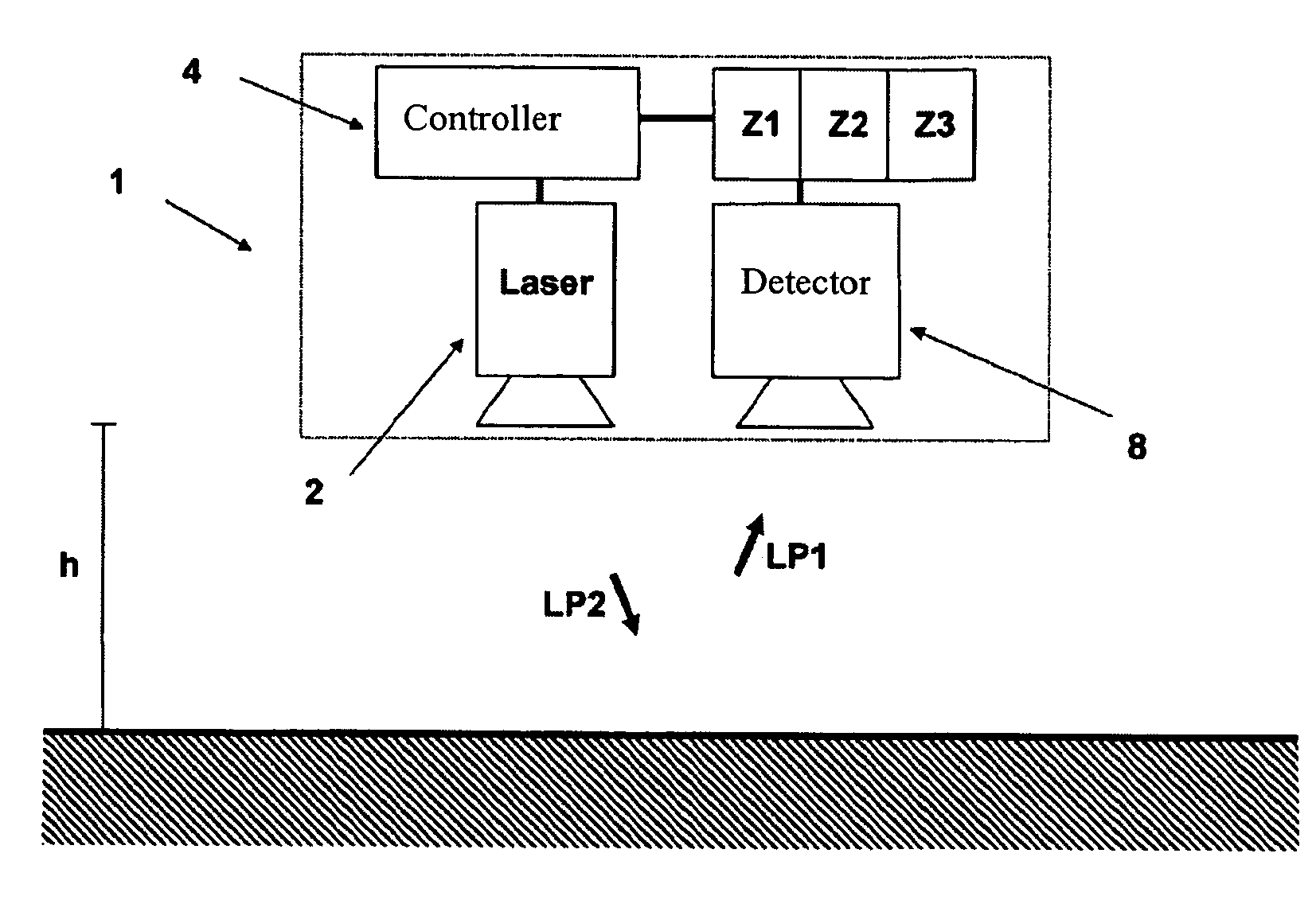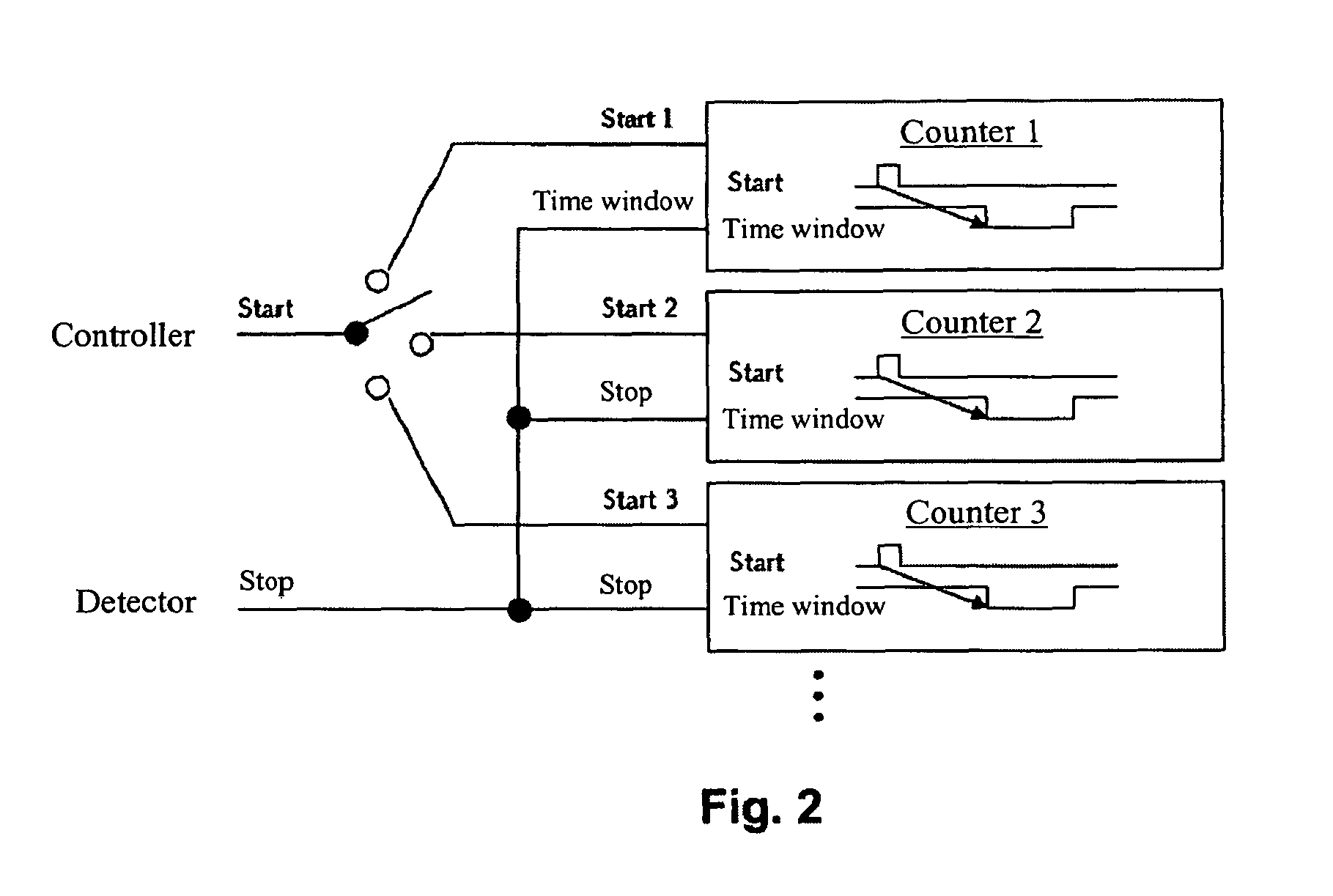Device and method for the determination of distance by means of light pulses
a technology of light pulses and devices, applied in distance measurement, surveying and navigation, instruments, etc., can solve the problems of increasing the travel time of light pulses, decreasing the maximum light pulse frequency, and affecting the accuracy of distance measurement results
- Summary
- Abstract
- Description
- Claims
- Application Information
AI Technical Summary
Benefits of technology
Problems solved by technology
Method used
Image
Examples
Embodiment Construction
[0030]FIG. 1 is a schematic representation of a device 1 according to the invention for the determination of distance by means of light pulses. This device can be installed, for example, in an aircraft, in order to carry out, at a flying altitude of h, distance measurements, and thus acquire data on the terrain being flown over. The device 1 for the determination of distance by means of light pulses comprises a light source (for example, a laser) 2 for the emission of light pulses with a certain frequency. The light pulses emitted and reflected by the light source 2 (for example LP1 and LP2) are received by a detector 8. The detector 8 and the light source 2 are connected to a controller 4, which is in communication with them or can control them.
[0031]As one can now also see in FIGS. 2 and 3, the device 1 according to the invention for the determination of distance by means of light pulses comprises furthermore several timers or counters (in FIGS. 1 to 3, three counters or timers Z1...
PUM
 Login to view more
Login to view more Abstract
Description
Claims
Application Information
 Login to view more
Login to view more - R&D Engineer
- R&D Manager
- IP Professional
- Industry Leading Data Capabilities
- Powerful AI technology
- Patent DNA Extraction
Browse by: Latest US Patents, China's latest patents, Technical Efficacy Thesaurus, Application Domain, Technology Topic.
© 2024 PatSnap. All rights reserved.Legal|Privacy policy|Modern Slavery Act Transparency Statement|Sitemap



